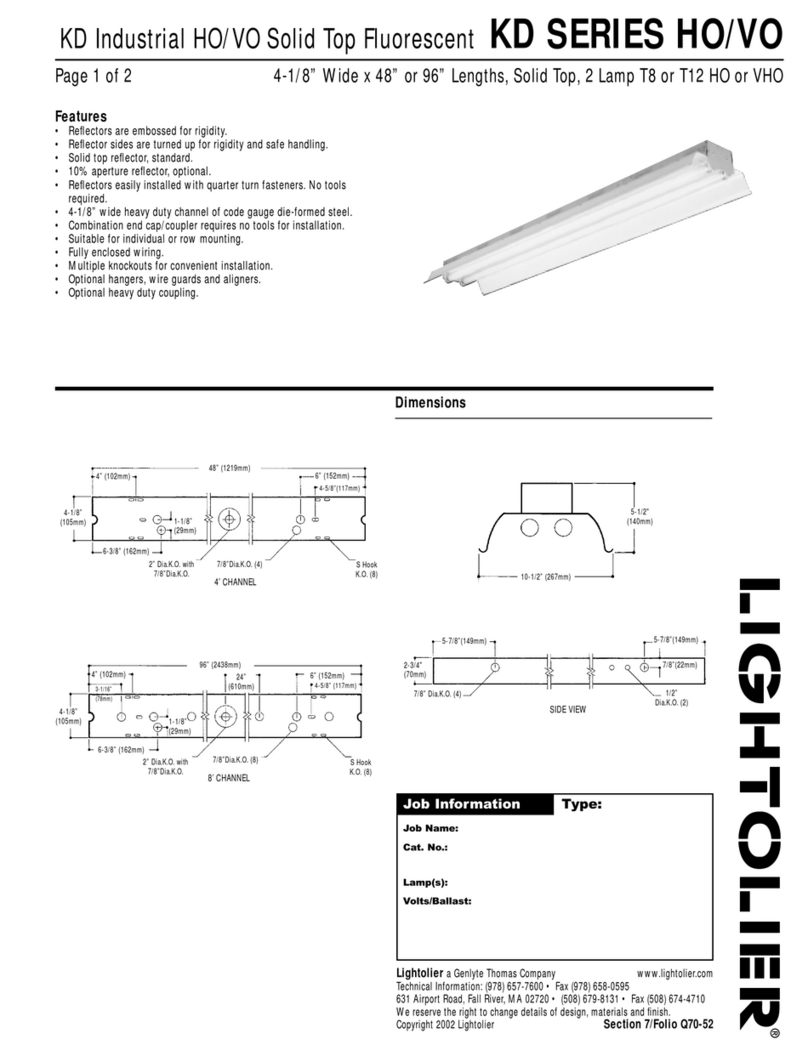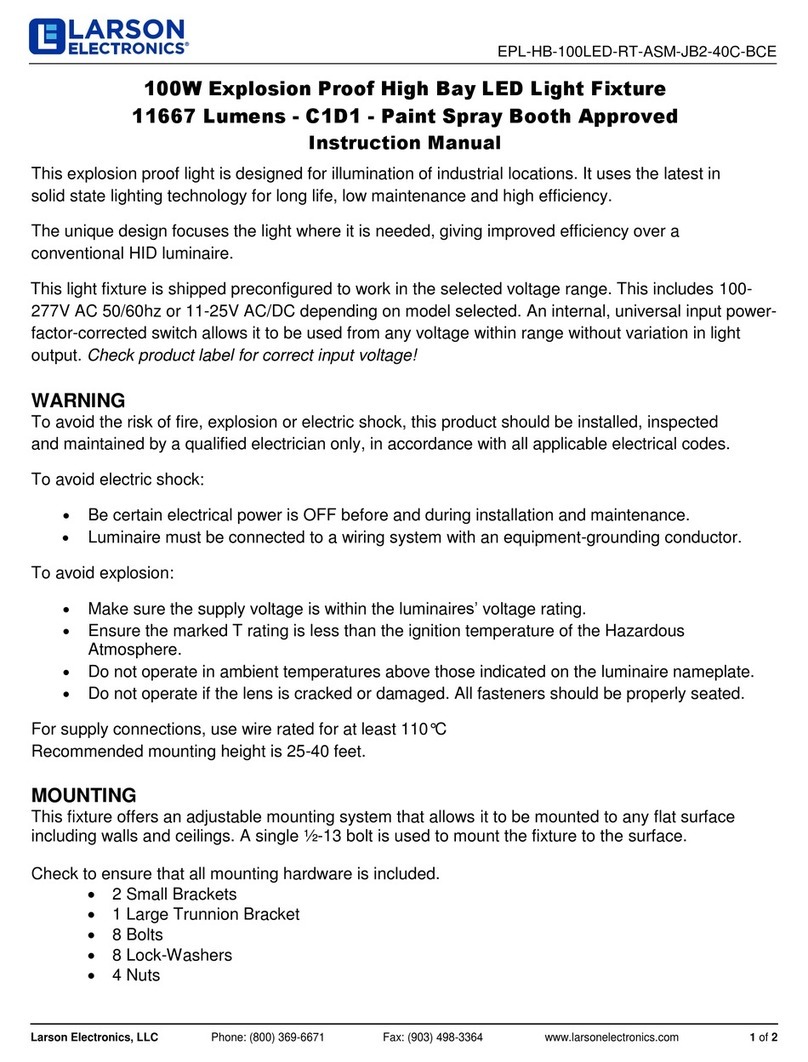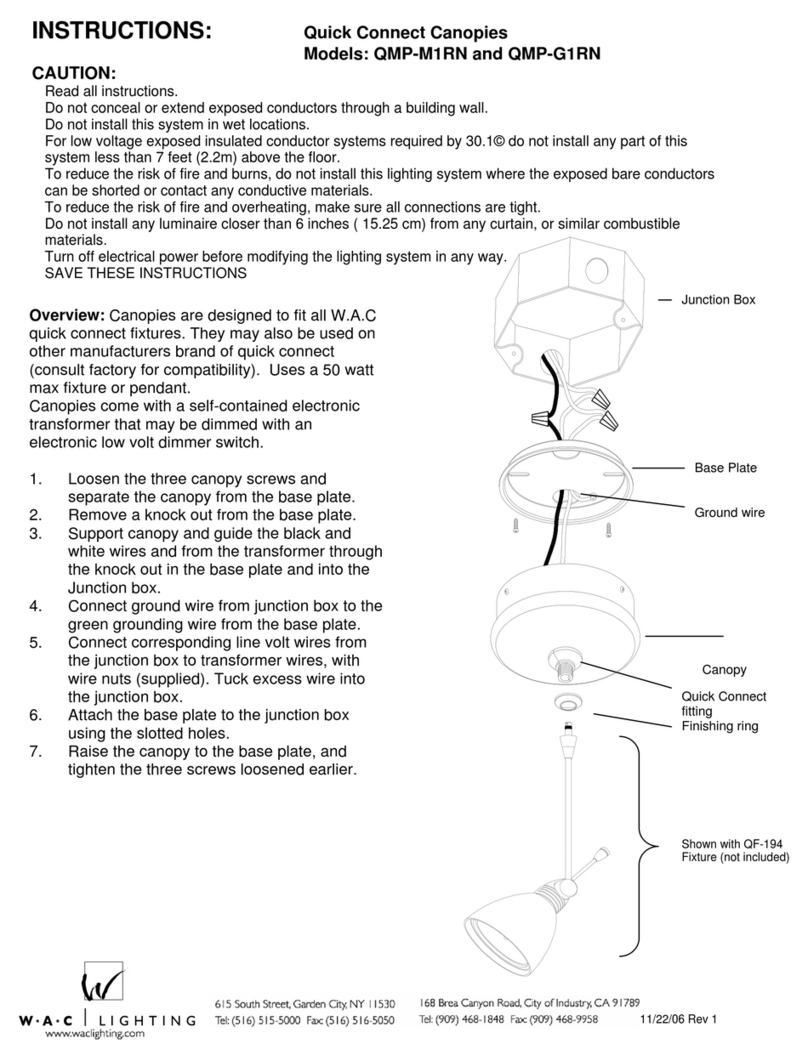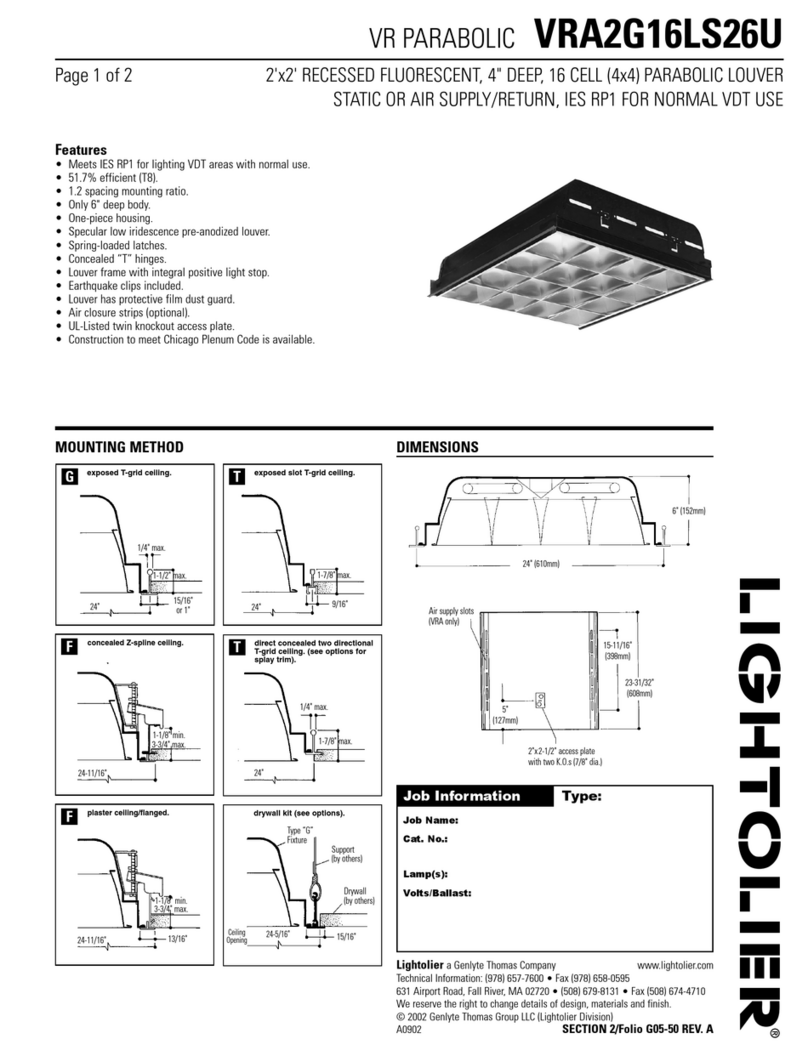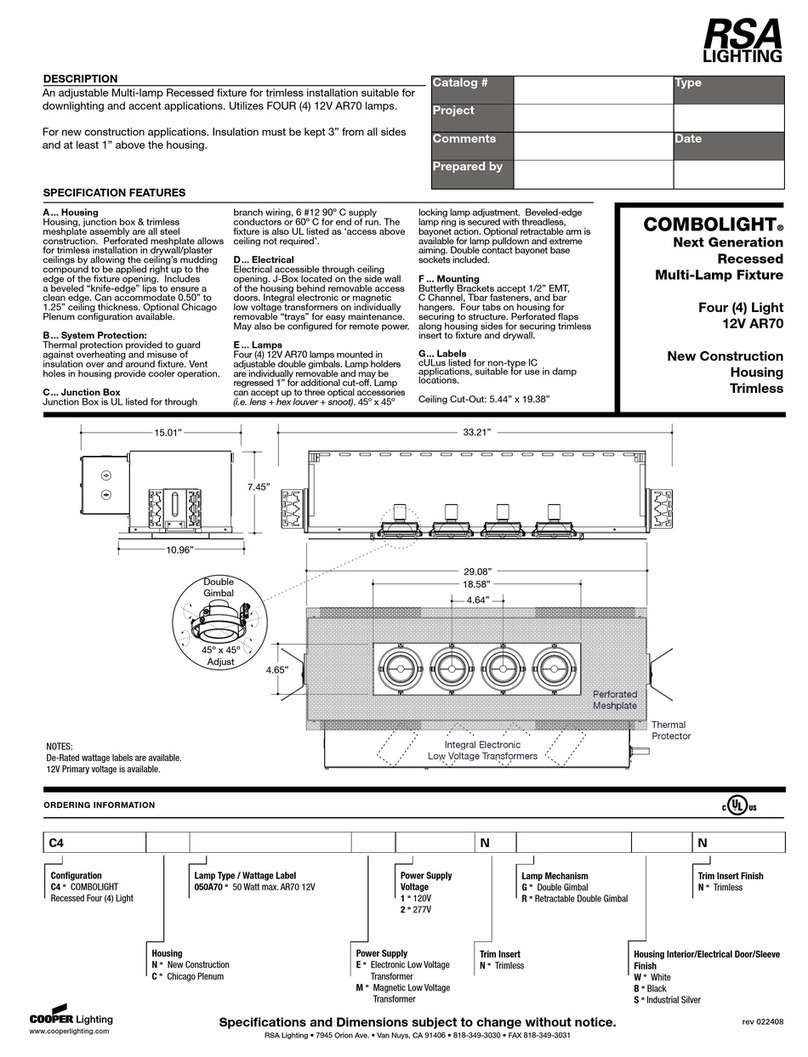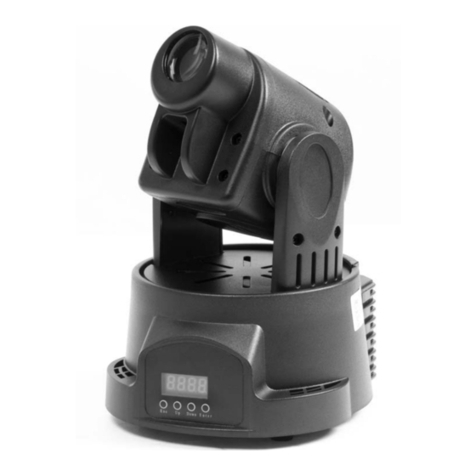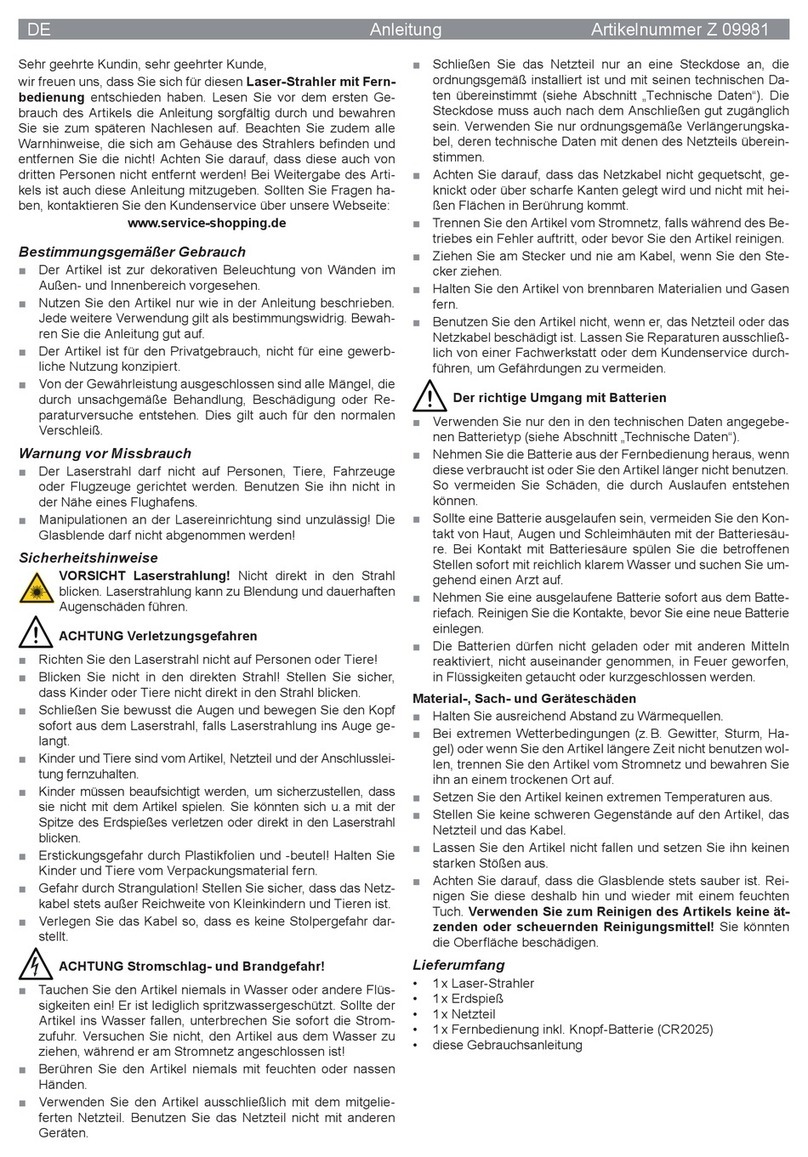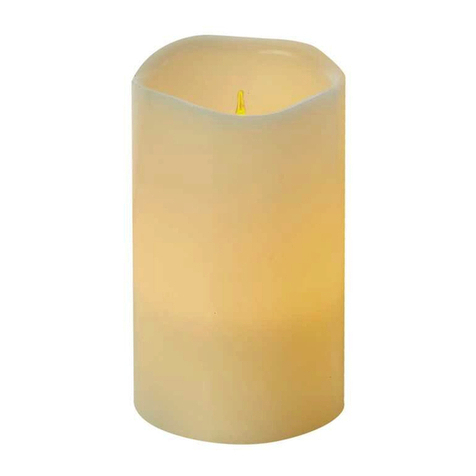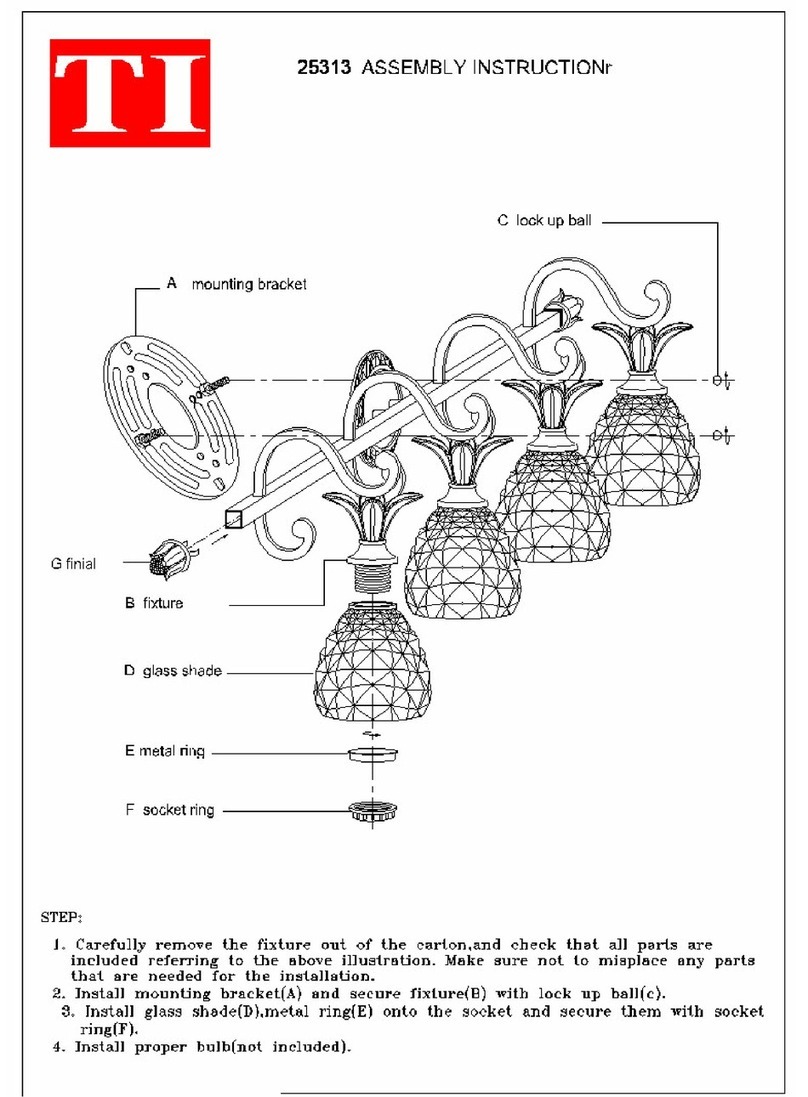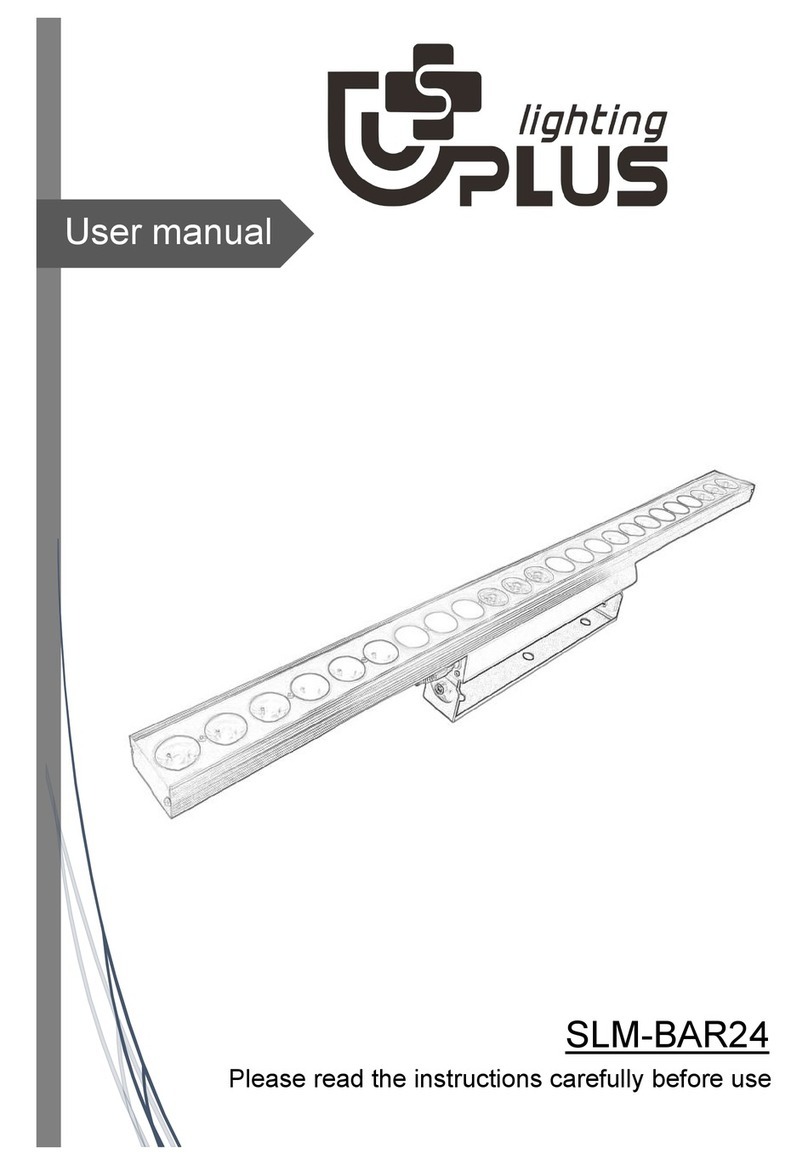
9Systemleuchte LED Montageanleitung/LED system light assembly instructions/Lampes à diodes – Notice de montage
3. Sicherheitshinweise
3. Safety instructions
3. Consignes de sécurité
D
3.4. Gefahren
Gefahr!
Unmittelbare Gefahr für
Leib und Leben.
Diese LED-Leuchten sind elektronische Pro-
dukte. Einige dieser Typen können mit einer
Spannung von bis zu 230 V AC betrieben
werden.
Für nähere technische Informationen und
Spannungsangaben siehe Kapitel 10 Techni-
sche Informationen.
Daher besteht bei unsachgemäßer Handha-
bung die Gefahr von schweren oder tödlichen
Verletzungen durch Stromschläge.
Folgende Punkte sind zu beachten, um Ver-
letzungen oder Beschädigungen am Gerät zu
vermeiden:
7Die Leuchte darf nicht in einer feuchten
Umgebung verwendet werden.
7Verstellen Sie die optischen Eigenschaften
nur, wenn die Leuchte vom Netz getrennt
ist.
7Trennen Sie das Gerät vom Netz, wenn
Sie in Schaltschränken bzw. Anlagenteilen
Messungen des Isolationswiderstandes
durchführen.
7Metallische Teile können sich während des
Betriebes erhitzen. Eine Berührung kann zu
Verbrennungen führen.
Ist aufgrund einer Beschädigung des Gerätes
eine Reparatur erforderlich, trennen Sie dieses
unverzüglich vom Netz und wenden Sie sich
an Rittal.
Unter anderem folgende Beschädigungen
erfordern eine Reparatur oder einen Austausch
des Gerätes:
7Eine Flüssigkeit ist in das Gerät gelau-
fen oder ein Gegenstand ist in das Gerät
gefallen.
7Das Gerät ist mit Regen oder Wasser in
Berührung gekommen.
7Das Gerät wurde fallen gelassen oder
beschädigt.
7Das Gerät funktioniert nicht ordnungsge-
mäß, wenn Sie den Bedienungshinweisen
folgen.
Gefahr!
Mögliche Gefahr für
Leib und Leben.
Die Leuchte muss im Schaltschrank mit max.
16 A abgesichert sein.
Angaben zur Geräteabsicherung bei AC Span-
nungsversorgung:
- Vorsicherungen mit Leitungsschutzschalter;
z.B. B16A
- Für UL-Anwendungen sind die entspre-
chenden Anforderungen zu berücksichtigen;
Absicherung mit max 15 A.
EN
3.4. Hazards
Danger!
Immediate danger
to life and limb.
These LED lights are electronic products.
Some of these types can be operated at a
voltage of up to 230 V AC.
For detailed technical information and rated
voltage see chapter 10 Technical information.
As such, if handled incorrectly, there is a dan-
ger of serious injury or death due to electric
shock.
The following points must be observed in
order to avoid injury and damage to the equip-
ment:
7The light must not be used in a humid
environment.
7Do not adjust the optical properties without
first disconnecting the light from the mains.
7Disconnect the device from the mains when
measuring the insulation resistance in enclo-
sures or system parts.
7Metallic parts may become hot during ope-
ration. Contact may cause burn injuries.
If a repair becomes necessary because the
device is damaged, disconnect it from the
mains immediately and contact Rittal.
The following types of damage, among others,
will necessitate a repair or replacement of the
device:
7Ingress of water into the device, or an object
falling into the device.
7The device has come into contact with
rainwater or water.
7The device has been dropped or damaged.
7The device no longer functions correctly
when the operating instructions are followed.
Danger!
Possible danger to
life and limb.
The light must be fused with a maximum of
16 A inside the enclosure.
Information on device fusing for AC supply
voltage:
- Pre-fuses with power circuit-breaker, for
example B16A
- For UL applications the respective require-
ments must be taken into account; fusing with
max 15 A.
F
3.4. Dangers
Danger !
Risque de blessures graves,
voire mortelles.
Ces lampes à diodes sont des produits élec-
troniques. Certains de ces types peuvent être
alimentés avec une tension jusqu'à 230 V AC.
Pour de plus amples informations techniques
et pour les indications de tension, voir chapitre
10 Caractéristiques techniques.
En cas de maniement inapproprié, il y a ainsi
risque de blessures graves voir mortelles par
électrocution.
Les points suivants doivent être observés
pour éviter les blessures ou les dommages sur
l'appareil :
7Les lampes ne doivent pas être utilisées
dans un environnement humide.
7Régler les caractéristiques optiques unique-
ment lorsque les lampes sont hors tension.
7Mettre l'appareil hors tension lorsque vous
eectuez des mesures de résistance diélec-
trique dans les armoires électriques ou sur
une partie de l'installation.
7Les parties métalliques peuvent s'échauer
en cours d'exploitation. Des brûlures peu-
vent survenir en cas de contact.
Si une réparation est nécessaire suite à des
dommages sur l'appareil, mettre celui-ci
immédiatement hors tension et adressez-vous
à Rittal.
Les dommages suivants entre autres néces-
sitent une réparation ou un remplacement de
l'appareil :
7Un liquide a coulé dans l'appareil ou un
objet est tombé dans l'appareil.
7L'appareil est entré en contact avec de la
pluie ou de l'eau.
7L'appareil est tombé ou a été endommagé.
7L'appareil ne fonctionne pas correctement
tout en suivant les instructions d'utilisation.
Danger !
Risque de blessures graves,
voire mortelles.
Dans l'armoire électrique, les lampes doivent
être protégées avec max. 16 A.
Informations pour protéger la lampe en cas
d'alimentation électrique en courant alternatif :
- Dispositif de sécurité par disjoncteur (ex :
B16A)
- Pour les applications UL, les exigences
suivantes doivent être respectées : protection
max. 15 A.
EN FD






















